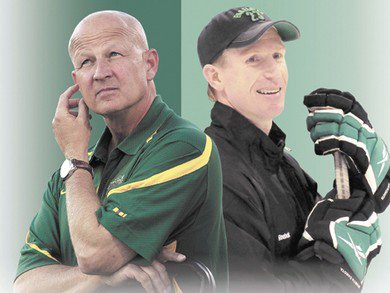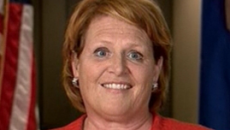In 40 Out Of 50 States The Highest Paid Public Official Is A Coach

This inforgraphic from Deadspin represents a pretty said commentary on the state of our priorities. In 40 out of the 50 states, the highest paid person on the public’s payroll is a university athletics coach.
Also worth noting is that in 100% of the states, the highest paid public official is someone in higher ed:

I wrote about this issue back in January in a post entitled, “Something Is Wrong With Our Priorities When University Sports Coaches Make More Than Governors.” North Dakota’s highest paid official works in the university system and is not a coach, but that doesn’t mean that the state is skimping on salaries for our athletic coaches.
Dave Hakstol, the head coach of the University of North Dakota’s hockey team, has a $300,000/year base salary, thanks to a new six-year extension signed last year, with bonuses potentially adding another $135,000/year. Craig Bohl, head coach of North Dakota State University’s Bison football team, just signed an eight-year contract extension worth $206,503 with a minimum 5% annual raise, 3% of gross ticket sales and $42,500/year worth of performance incentives.
As a point of comparison, North Dakota Governor Jack Dalrymple’s salary was $113,594 in 2012.
Now, some might be tempted to argue that sports programs pay for themselves. They bring revenue and notoriety to the programs and universities they work for. Except, that’s not really true. Even the largest sports programs usually lose money. “Looking at data from 2011-2012,” reports Deadspin, “athletic departments at 99 major schools lost an average of $5 million once you take out revenue generated from ‘student fees’ and ‘university subsidies.’ If you take out ‘contributions and donations’—some of which might have gone to the universities had they not been lavished on the athletic departments—this drops to an average loss of $17 million, with just one school (Army) in the black.”
Put simply, college athletics is not a profitable enterprise. College athletics only work when heavily subsidized by taxpayers, students and alumni.
That’s certainly true here in North Dakota. According to data compiled by USA Today, in 2011 more than 51% of the revenue for the University of North Dakota’s athletics programs comes from student fees and university subsidies. Take away the student fees and university subsidies, and the program would have run a $9.59 million loss.

Things are similar at North Dakota State. More than 47% of the NDSU Bison’s revenues come from student fees and university subsidies. Take those revenues out of the picture, and Bison athletics would have lost nearly $8 million.

In short, far from being a revenue benefit to the universities, the NDSU and UND sports programs are a negative. They cost taxpayer and students dearly.







